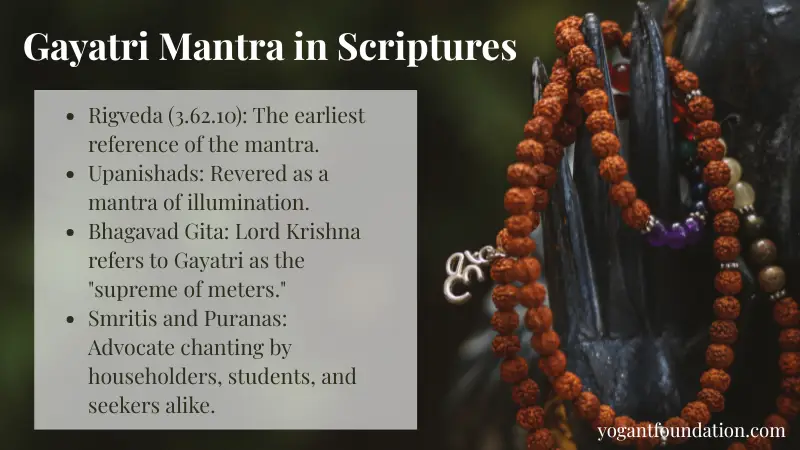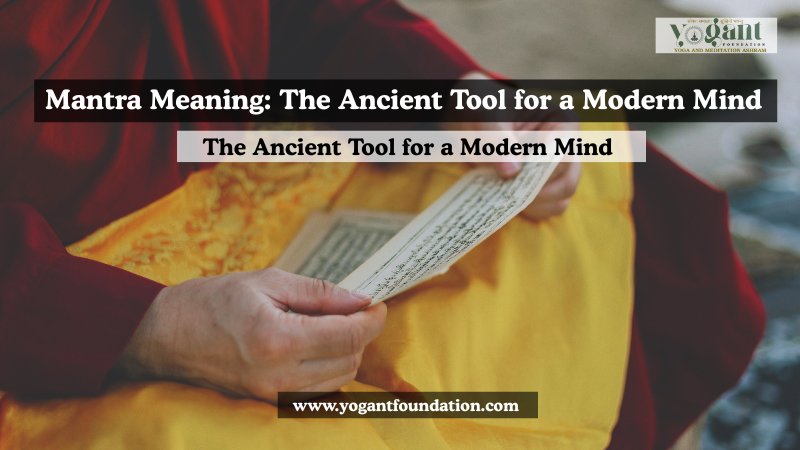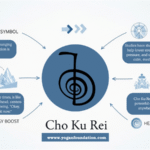Mantras and Meanings: The Ancient Tool for a Modern Mind
What is a Mantra? A Beginner’s Guide to Mantra Meaning: I’ll admit, the first time I heard someone chanting a mantra, I didn’t get it. I was in a yoga class, and as everyone around me solemnly intoned “Om,” I felt a bit like an outsider, just moving my lips and waiting for the “real” exercise to begin. It felt like a mystical ritual, disconnected from my busy, modern life.
It took me years to realize I was wrong. I discovered that a mantra isn’t a relic; it’s a profoundly practical tool. I’ve since found myself using them not just on a meditation cushion, but in the dentist’s waiting room, in my car before a difficult conversation, and while staring at a blank screen, willing the words to come. A mantra meaning, I learned, is an anchor. It’s that one, simple thing you can hold onto when the storm of your thoughts, your schedule, and your worries threatens to sweep you away.
Deconstructing the Word: An “Instrument of the Mind”
Definition of Mantra: Let’s break down the word itself, because its origin story is beautifully straightforward. It comes from Sanskrit, an ancient Indian language, and is built from two simple parts:
- Man: meaning “mind” or “to think.”
- Tra: meaning “tool,” “instrument,” or “vehicle.”
Put them together, and you have your definition: a “Montra” is an “instrument of the mind.”
This was the “aha!” moment for me. I stopped seeing it as a magical spell and started seeing it for what it is—a piece of mental technology. Think of your mind as a vast, open field. Your thoughts are the weather: sometimes calm and sunny, other times a chaotic tornado of anxieties and to-do lists.
A mantra & mantra meaning is the tool you use to tend that field. It’s the shovel you use to dig a well of calm. It’s the fence you build to keep out the distractions. The vehicle you climb into to travel from a place of stress to a place of peace. It’s not complicated; it’s just a tool, and like any good tool, its power is unlocked not by merely owning it, but by using it.
A Whisper from the Ancients: The Historical Roots
Before they were found in our meditation and yoga apps, Indian ancient spiritual practices relied on mantras. These texts, known as Vedas, date back more than 3,000 years.
The wise ones of that time, the rishis, didn’t just make these sounds up. They were believed to have “heard” them in the deepest states of meditation, perceiving them as the fundamental vibrations that make up the universe itself. To them, chanting a mantra wasn’t just a nice thing to do; it was an act of cosmic tuning. It was how a human being could align their own personal energy with the grand, harmonious rhythm of existence.
Two of the most powerful mantra meaning & examples

The Gayatri Mantra meaning:
The mother of mantras, this is what many call it. The request isn’t for a brand new car or an improved job. It is an appeal for enlightenment. “May we contemplate the divine light created by the Creator.” “May it illuminate our intellect.” The ultimate gift is the ability to clearly see.
Om (Aum) Mantra Meaning:
The primordial vibration is the one that was heard at the beginning of the Universe. To chant “Om” is to physically feel your connection to everything that ever was and ever will be.
This wisdom traveled. Buddhism embraced it with the profoundly compassionate “Om Mani Padme Hum.” The core idea remained: sound shapes reality, and by shaping the sound within us, we can reshape our inner world.
The How and Why: The Multifaceted Power of Repetition
So, how does this actually work? The magic is in the repetition, and it operates on a few different levels that I’ve experienced firsthand.
1. The Anchor in the Storm of Thought
When I sit to meditate, my mind is like a browser with 50 tabs open. I’m thinking about an email I need to send, a comment I overheard, what I’m making for dinner. The moment I introduce a mantra—something as simple as “peace” or “I am here”—it gives my busy mind a single job. It’s my anchor. When a wave of anxiety about tomorrow tries to pull me away, I have this rope to hold onto. The mantra doesn’t stop the waves, but it keeps me from drowning in them. It’s a workout for my “attention muscle,” and it’s made me noticeably more focused in my daily life.
2. The Vibrational Tuning Fork
There’s also a physical, sensory component to it. Our bodies are mostly water, and water conducts vibration beautifully. The ancient sages believed that chanting these specific sounds literally recalibrates our internal energy. It’s like hitting a tuning fork and holding it up to your soul. When I chant “Om” aloud, I can feel the vibration in my chest and my skull. It’s a physical sensation that seems to shake loose mental cobwebs. It feels less like thinking and more like being played, like an instrument, and being tuned back to my correct pitch.
3. The Neuropathway Carver
From a modern, less poetic perspective, this is simple brain training. Our thought patterns are like trails in a forest. The paths we walk most often—worry, self-criticism, haste—become deep, well-worn ruts. It’s easy to fall into them without thinking. Using a mantra is the deliberate, conscious work of carving a new path. Every time I repeat “I am capable,” I am taking a step on a new trail of self-belief. With enough repetition, that new, positive path becomes the brain’s easy, default route. This is the science behind why daily affirmations can genuinely change how we see ourselves.
Mantra Meaning for the Modern World: From the Sacred to the Secular
The true testament to the power of the mantra is how effortlessly it has adapted to our contemporary lives. You don’t need to adopt a new religion to use one.
- The Personal Affirmation: This is perhaps the most common modern mantra. When I’m feeling overwhelmed, I’ll often just repeat, “I am enough.” It’s a direct counter-attack on the voice of doubt. It’s a tool for rebuilding my inner landscape, one positive thought at a time.
- The Stress-Relief Trigger: I’ve used mantras in a crisis. Stuck in traffic and late for an appointment, breathing deeply and silently repeating “I am calm” has stopped a full-blown panic attack in its tracks. It’s a switch that can, with practice, manually turn down the body’s stress response.
- The Performance Enhancer: I’m a writer, and my mantra before starting a big project is always, “Trust the process.” It focuses me and shuts down the fear of the blank page. Athletes use “light and fast,” speakers use “I am a channel”—all are using mantras to access a state of effortless focus, or “flow.”
Weaving Mantra Meaning into the Tapestry of Your Life
So, how do you start? It’s far simpler than you might think. You don’t need special beads (though they can be nice), a perfect quiet room, or hours of free time.
Just find a word or a short phrase that means something to you. It can be the ancient “Om,” the English word “release,” or a personal motto like “one step at a time.” The key is that it must resonate. You should say it with a feeling of a kind truth or quiet hope.
Then, just begin. Repeat it silently while waiting for your coffee to brew. Sync it with your breath on your morning walk. Whisper it to yourself at your desk when the noise becomes too much.
This ancient “instrument for the mind” is a gift. It asks for nothing but a moment of your time and a breath of your intention. In a world that is constantly shouting for our attention, the most radical act can be to choose what you will listen to inside your own mind. And in that quiet space, you can find a sound that changes everything.


